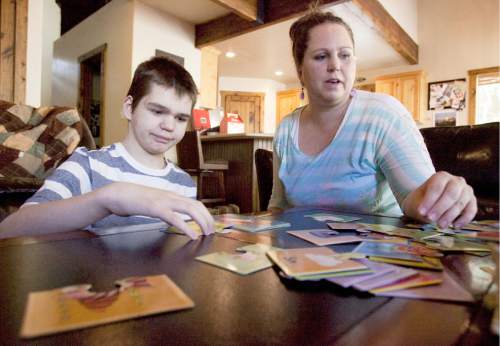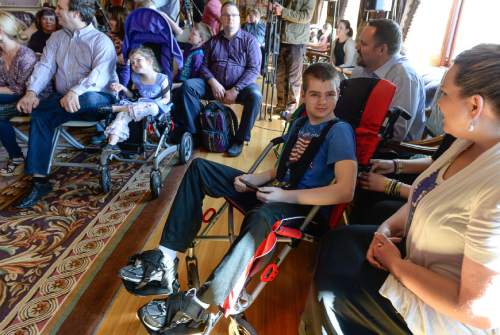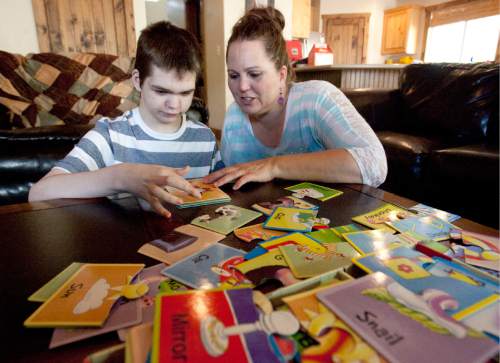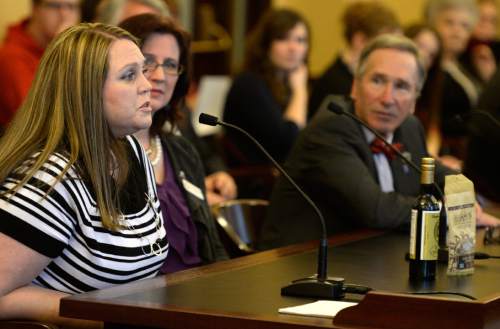This is an archived article that was published on sltrib.com in 2016, and information in the article may be outdated. It is provided only for personal research purposes and may not be reprinted.
A proposal to legalize medical marijuana that's inching forward in the state Legislature has some Utahns with chronic pain and epilepsy rejoicing, while wary lawmakers say more research is needed to help the state better understand pot's potential — and its risks.
Utah researchers, for their part, agree.
"I'm a firm supporter of developing the data," said University of Utah Pediatrics Chairman Ed Clark, "that will help guide policy."
Even Utah Gov. Gary Herbert last month said he thought more Utah-based research on marijuana is a "good idea."
But Clark and his colleagues currently can take only baby steps.
As critics of Sen. Mark Madsen's medical marijuana proposal — including the state's predominant faith — cite limited research as one reason Utah should refrain from becoming the 24th state to allow medical cannabis, the plant's illicit nature and its federal classification present a hurdle to actually carrying it out.
—
Federal regulators classify marijuana alongside heroin and cocaine in the most dangerous category of drugs "with no accepted medical use and a high potential for abuse." Getting special approval from the Food and Drug Administration to study it can take months and is never guaranteed.
It "would be interesting to see how different types of marijuana use" affect pot receptors "in the human brain and how they relate to addiction and behaviors," said Satoshi Minoshima, head of radiology at the U. But Minoshima, who specializes in measuring how molecules in the brains of humans and animals react and respond to drugs, cannot plan such a study just yet.
Researchers would also like to pinpoint pot's longterm effects and how it interacts with other — legal — drugs, said U. pharmacology professor Karen Wilcox.
"That's one of our concerns," said Wilcox, part of a team now analyzing effects of cannabidiol in people with epilepsy who also take other drugs to limit seizures.
Cannabidiol , a pot-derived substance that is absent THC — the plant's main psychoactive component — and does not produce a high, has found more acceptance. In 2013, Utah passed "Charlee's Law," allowing people with intractable epilepsy to legally obtain cannabidiol.
And a study by Clark and other researchers across the country confirmed in December what some Utah families with epileptic children already knew: Cannabidiol can reduce seizures.
Two dozen Utah kids participated in the study, which found that half had a 50 percent reduction in monthly seizures after taking a pharmaceutical version of cannabidiol.
Jennifer May's son Stockton was part of the U. study. The Pleasant Grove 13-year-old still has about nine of the 10 seizures he had before taking the drug, called Epidiolex, May said. But it has curbed their severity, along with the migraines and vomiting that accompany them.
Under Charlee's law, 120 people have signed up to get a hemp permit through the Utah Department of Health. Seventeen other states have similar laws.
Clark believes cannabidiol could gain federal approval and be prescribed "in the next few years" to epilepsy patients who have exhausted all other treatments. "It's reasonable to expect," he said.
—
For some children with Dravet's syndrome, said Colorado physician Margaret Gedde, the more controversial THC can help.
Small doses of the hallucinogenic substance "work as a rescue" in about a third of epileptic kids who try it — and are too tiny to produce a high, says Gedde, who's working with the University of Colorado.
Nationally, peer-reviewed studies — such as a 2015 University of California, Davis analysis and another at the VA Northern California Health Care System, published in 2013 — have found that marijuana can be useful for people with longterm pain who do not respond well to other drugs. Another Harvard School of Medicine study concurred.
Critics note, however, that many of the studies are small; a 2002 study at McGill University in Canada had 15 participants.
But the research is growing, says Lissa Lander, a chronic pain patient since a car accident in childhood. She's reminded Utah lawmakers of that as she advocates for legalized medical marijuana at the Legislature this year.
During a visit in Colorado at Christmastime, Lander said, she found marijuana relieved lingering pain without making her high. It allowed her to play and explore for longer than usual with her children — ages 2, 4 and 8.
Some legislators have been skeptical about the wealth of anecdotal evidence supporting medical marijuana, and The Church of Jesus Christ of Latter-day Saints also weighed in, expressing concerns about allowing Utahns to legally use weed and echoing the American Medical Association's calls for more research.
The notion that there's a lack of research on the plant's ability to curb chronic pain is "just not true," Lander said, pointing to the Mayo Clinic's position that the substance is an appropriate treatment for longterm pain, multiple sclerosis and other uses.
Madsen's medical pot proposal now awaits approval in the House. It passed the Senate last week after being tweaked to clarify that while the plant's oils would be permitted, smoking marijuana still would be illegal.
—
The Mayo Clinic also notes, however, that more research is needed on whether marijuana is helpful in treating brain injury, sleep disorders, dementia and other longterm health issues.
Local scientists would like to get in on such weed research without facing criminal charges. And Utah could be positioned to produce more than knowledge for the state, said Ivy Estabrooke, head of the Utah Science Technology and Research Initiative.
Researchers may be able to someday commercialize marijuana therapies after testing them in the labs, she told a Feb. 16 legislative panel.
"It really has a much larger effect on kids and adults than I think society recognizes," she said.
For example, she said, the Veterans Affairs hospital in Salt Lake City "has taken an interest" in studying medical marijuana as a treatment for symptoms of post-traumatic stress disorder. "It's a really critical area we haven't touched on."
And it is likely to remain untouchable if the drug retains its federal "Schedule 1" status, contends Sen. Brian Shiozawa, a physician. He is sponsoring a resolution urging Congress to deem the drug less harmful.
"We can work on this in our own state with our own talent and resources," Shiozawa said.
Legislators have not tapped Utah's agricultural school for information on whether marijuana could grow in Utah and how much it would cost, said Paul Johnson, plant science professor at Utah State University.
Johnson, head of the plants, soils and climate department, notes that his university grew hemp, another form of the plant, for clothing and other fiber in the late 19th century.
"It'll for sure grow here," Johnson said. "The main question is, will the laws restrict it?"
Twitter: @anniebknox









